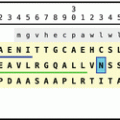and Winfried G. Rossmanith2
(1)
Lenzkirch, Germany
(2)
Ettlingen, Germany
Medical history is built on traditions from the Middle East (Egyptian, Jewish, Arabian), the Far East (mostly Chinese), and Europe, with Greek, Roman, medieval, and modern elements. Because of geographical distances, language or religious communication barriers, or rejection of older traditions, the European medical community had to rediscover facts which were known in ancient Egypt, China, or Arabia a long time ago. Whether an endocrinological profession was known in ancient times may be doubted.
Below, we will separate ancient times, the new age, and modern times without any assessment in mind. The search for disease causes by scientific means—hypothesizing, performing experiments, refuting or corroborating the hypothesis—was established by the Greeks.
Table 2.1 does not cover the richness of modern discoveries for lack of space. Therefore, we conclude the historical overview with the reevaluation of the hypothalamic–pituitary portal system.
Table 2.1
Historical summary
Year | Organ, action, hormone | Discoverer |
|---|---|---|
? | Role of testes in animal husbandry | Humans |
4000–3000 B.C. | Human ovariectomy | Ancient Egypt |
3000 B.C. | Amenhotep IV and acromegaly (?) | Ancient Egypt |
1600 B.C. | Seaweed and heated sponges for treatment of goiter | Chinese, mentioned by Plinius, Juvenal, and Galen (50 B.C. to A.D. 300) |
1550 B.C. | Diabetic polyuria and treatment | Egyptian papyrus |
460–400 B.C. | Relationship between mumps and infertility | Hippocrates |
Relationship between galactorrhea and amenorrhea | Hippocrates | |
A.D. 81–138 | Description of diabetes mellitus | Aretaeus |
7th century | Sweet taste of urine in diabetes mellitus | Chen Chuan; rediscovered by T. Willis (1621) |
1135 | Sheep testis extract against male infertility | Hsu Shu-Wei |
1561 | Description of ovaries, oviduct, corpus luteum | Vesalius |
1563 | Description of adrenal gland s | B. Eustachio |
17th century | Estrogens from urine | Chinese iatrochemists |
1664 | Pancreatic juice | R. de Graaf |
1772 | Report of acromegaly | N. Saucerotte |
1802, 1835, 1840 | Report of thyrotoxicosis | G. Flajani, R.J. Graves, and C. von Basedow |
1855 | Diseases of the adrenal cortex | T. Addison |
1864 | Report of acromegaly and pituitary tumor | A. Verga |
1865 | Description of the hypothalamus | J.B. Luys |
1869 | Pancreatic islet cells | P. Langerhans |
1893 | Langerhans cells producing hormones | G.-E. Laguesse |
1894 | Blood-pressure-enhancing compounds the adrenal extract | G. Oliver and E.E. Schaefer |
1895 | Vasopression from pituitary extracts
Stay updated, free articles. Join our Telegram channel
Full access? Get Clinical Tree
 Get Clinical Tree app for offline access
Get Clinical Tree app for offline access

|



